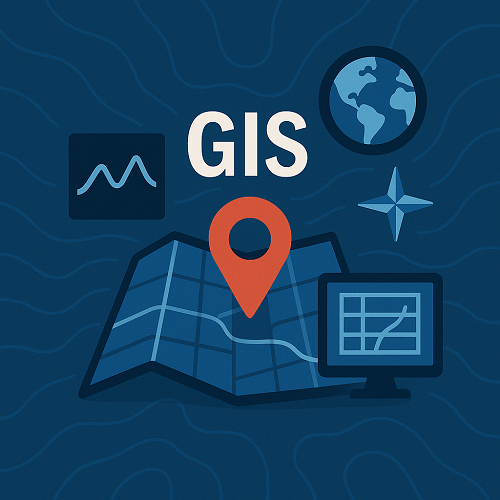TL;DR
- GIS is merging with immersive technologies like VR for interactive spatial experiences.
- AI-driven analytics enable more precise predictive mapping and decision-making.
- IoT integration delivers real-time geospatial data streams from connected devices.
- Blockchain strengthens data integrity and provenance in GIS workflows.
- Drones and LiDAR are revolutionizing on-the-ground data collection accuracy.
What’s new right now
In 2025, the geospatial industry is seeing major leaps in how GIS data is collected, processed, and used. Technologies such as immersive VR mapping tools are enabling planners to virtually inhabit modeled environments, while AI algorithms are now capable of autonomously cleaning, classifying, and analyzing large-scale spatial datasets. The proliferation of IoT sensors and edge devices is pushing real-time location intelligence into sectors from logistics to environmental monitoring. Furthermore, blockchain systems are being adopted to ensure the authenticity and traceability of spatial records. Drone and LiDAR deployments are producing centimeter-level accuracy, significantly enhancing modeling precision.
Why it matters
For business stakeholders, the expansion of GIS capabilities means faster time to insight, more accurate forecasting, and a stronger competitive edge. Real-time analytics from IoT devices can streamline supply chain management or urban operations. On the technical side, AI and machine learning reduce manual processing, increase data quality, and open pathways for advanced simulations. Blockchain safeguards geospatial assets against tampering, critical for industries relying on trusted spatial evidence. Together these innovations are making GIS a core component in strategic decision-making across public and private sectors.
Deep Dive into Emerging GIS Technologies
Virtual Reality Integration
By embedding GIS data into immersive VR environments, stakeholders can experience a location or project in a spatially accurate, interactive form. This can aid urban designers, civil engineers, and emergency responders in planning and collaboration.
AI in Geospatial Analysis
Machine learning models now carry out land cover classification, anomaly detection, and predictive modeling faster and more reliably than traditional methods. This allows teams to act preemptively based on emerging spatial trends.
IoT-Based Real-Time GIS
Connected devices—from traffic sensors to environmental monitors—feed continuous location data into GIS platforms, enabling dynamic mapping and analysis of rapidly changing environments.
Blockchain for Data Integrity
Blockchain-ledgered GIS datasets ensure that every transaction and update is recorded immutably, providing transparency and trust, particularly in regulatory or legal applications.
Drones and LiDAR
The combination of UAVs and LiDAR produces high-resolution terrain and elevation data, supporting everything from flood modeling to precision agriculture.
Comparison of Trends and Approaches
| Technology | Primary Benefit | Ideal Use Case |
|---|---|---|
| Virtual Reality | Enhanced visualization | Urban planning, disaster preparedness |
| AI Analytics | Faster insights | Predictive mapping, environmental analysis |
| IoT Integration | Real-time data feeds | Smart city management, logistics |
| Blockchain | Immutable data records | Land registry, legal dispute resolution |
| Drones & LiDAR | High-precision terrain mapping | Infrastructure inspection, agriculture |
Mini Case Study: Smart Flood Risk Management
Problem: A coastal city faced recurring flooding due to inadequate predictive models and delayed response systems.
Approach: The city deployed IoT water-level sensors across critical zones, integrated live data into an AI-powered GIS platform, and utilized drones with LiDAR for detailed terrain mapping. Blockchain ensured the authenticity of incoming sensor feeds.
Outcome: Prediction accuracy improved by 35%, emergency response times were reduced by 40%, and the city saved an estimated $2 million annually in flood damage prevention costs.
Implementation checklist
- Assess current GIS infrastructure and identify capability gaps.
- Select appropriate integration technologies (VR, AI, IoT) aligned with objectives.
- Establish clear data quality and governance protocols.
- Deploy pilot projects to validate value and scalability.
- Integrate blockchain for high-integrity data environments.
- Train staff on new systems and workflows.
- Continuously monitor, evaluate, and iterate.
FAQs
What is GIS?
GIS, or Geospatial Information System, is a framework for gathering, managing, and analyzing spatial and geographic data.
How is AI applied in GIS?
AI automates classification, anomaly detection, and predictive analytics, improving speed and accuracy of spatial data processing.
Why use blockchain with GIS?
Blockchain verifies the provenance and integrity of geospatial datasets, crucial in regulated or legal contexts.
Are drones replacing traditional surveying?
Drones complement traditional methods by offering faster, high-resolution mapping, but may not replace ground surveys in all cases.
What are IoT-based GIS applications?
Examples include smart traffic management, environmental monitoring, and supply chain tracking using real-time sensor data.
Is VR in GIS just for visualization?
No, VR also supports collaborative planning, hazard assessment, and immersive simulations for field training.
Conclusion
As GIS technology continues to intersect with VR, AI, IoT, blockchain, and advanced data collection methods in 2025, organizations can unlock unprecedented operational insights and resilience. To capitalize on these advancements, consider piloting integrations and building internal expertise. For tailored strategies and solutions, explore our GIS services today.
